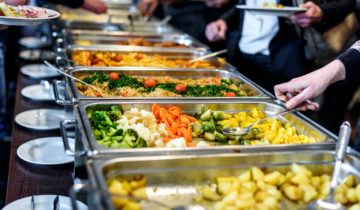The micro-environment of the restaurant industry is currently facing two major changes: the need for stability while emerging from an unprecedented crisis and the multi-dimensional requirements of socially responsible diners. The growth of fast food, “on-the-go” snacks, fooding, bistronomy, the renewal of gastronomy and the revival of brasseries has been in response to these major shifts in expectations: more speedy, more original, more experiential. “Ready-to” products have a role in this equation.
Service products: a response to the multi-channel food service industry
After almost two years of playing it by ear, restaurant owners have had to re-examine their business’ value chain to ensure the longevity of their establishments. They can address productivity by adapting the organisation of the business, changing their working hours, and redesigning their menus to incorporate products that provide regularity in the face of more unpredictable peaks in business than ever. Sales channels outside the dining room, with click & collect and meal delivery (and even possibly the staggering of dining times) are all potential sources of additional turnover.
Yet there is no getting away from a fundamental component in the equation: purchasing power. Concerns that this has been hit hard by the pandemic are well founded. It is highly likely that French people will keep a tight hold on their “eating out” budgets in the coming months. Retail prices are difficult to address in a crisis context. According to an Odoxa survey for France Bleu, 75% of people in France believe their purchasing power has decreased. This is also set to be a key issue in the 2022 French presidential election.
Consequently, while it is likely that French people will go out less, it is also likely that every outing will be seized as an opportunity to let go. It therefore seems just as dangerous here as anywhere else to attempt to compensate for difficulties with profit margins by raising tariffs.
The concept of “raison d’être”, of “value”, will be more significant than ever. Especially as aspirations with social connotations (local, organic, traceability, etc.), which were already high, have now been amplified by the lockdown. Outings will be rarer, and must be worthwhile.
Streamlining upstream supply in response to diners’ multi-dimensional demands
The equation is simple. How can the upstream (supply and preparation) of a dish be streamlined while meeting the multi-dimensional demands of the consumer?
-
- A demand for quality. Organic consumption (households + the food service industry) has doubled in five years, and almost quadrupled in a decade (figures from Agence Bio, 2021). The appetite for Made in France also reflects this dynamic. Indeed, consumers seem willing to accept a price increase of 37% for food products made in France (source article, in French). The entry into force of the EGAlim law in the mass catering sector should continue to “normalise” the pursuit of quality labels and schemes in commercial food service.
- A demand for social responsibility. Diners/consumers are adding to the list of criteria they examine when selecting food products: animal welfare, fair pay for farmers, short supply chains, carbon footprint, etc. This search for a virtuous meal was highlighted by the OpinionWay study conducted for d’aucy.
- A demand for competitiveness: a reasonable preparation time, competitive price, quality service, taste, etc.
In this complex configuration – where the definition of quality goes beyond health and organoleptic criteria – ready-to-cook, ready-to-garnish and ready-to-serve products tick all the right boxes.
The “ready-to-” product: restaurant owners’ key alley
Designed to make chefs’ and restaurant owners’ work easier, “ready-to” products provide a relevant response to diners’ demands, as well as to the economic constraints of the times (notably smaller teams, either due to lack of funds or the difficulty of recruiting in a strained market).
It has to be said that ready-to-cook, ready-to-garnish and ready-to-serve products have interesting attributes in their favour, if the choice of supplier is relevant:
- a guaranteed standard of quality over time;
- compliance with health standards;
- guaranteed traceability of foodstuffs;
- ease of use coupled with time savings (and thus reduced cost prices);
- respect for the environment and animal welfare;
- preserved organoleptic properties.
Cocotine’s “ready-to” products: take care of yourself and your diners
For you as a restaurant professional, Cocotine’s egg products are ready-to-cook, ready-to-garnish or ready-to-serve. Their preparation and packaging have been optimised to make them quick and simple to use.
For your diners, “ready-to” products are an assurance of delicious, healthy dishes that are also aligned with their ethical and societal convictions – the result of considered, environmentally-friendly agriculture driven by quality-committed cooperative producers, without intermediaries.







